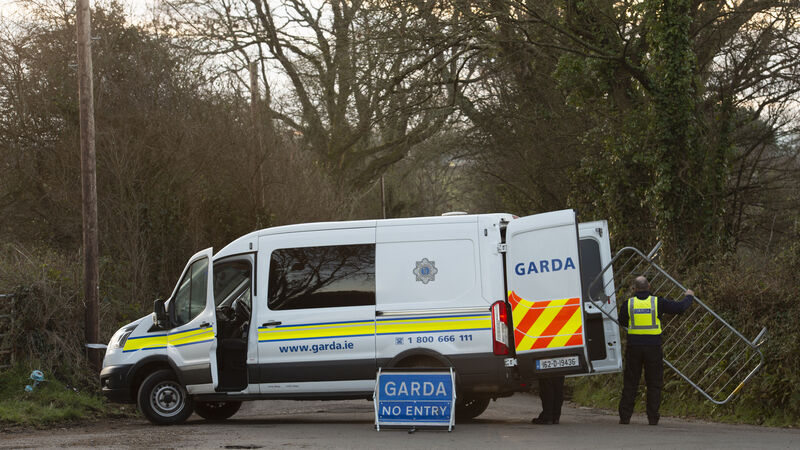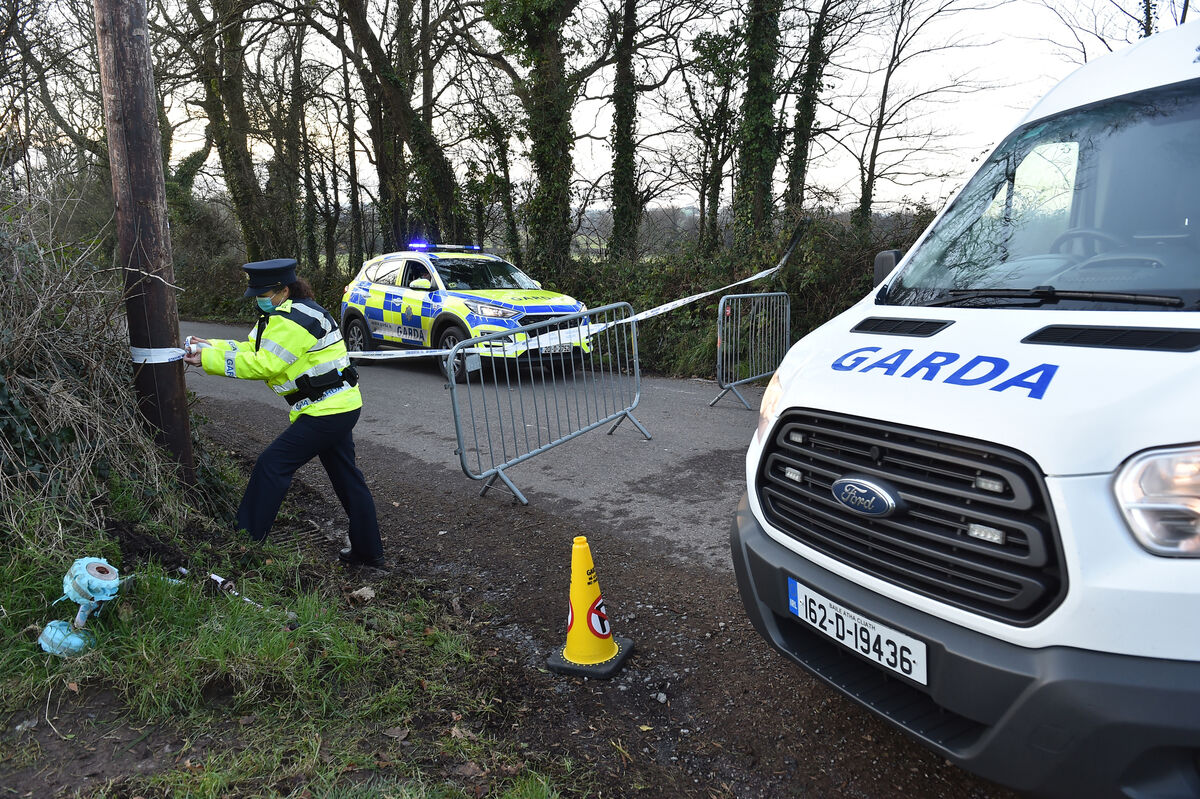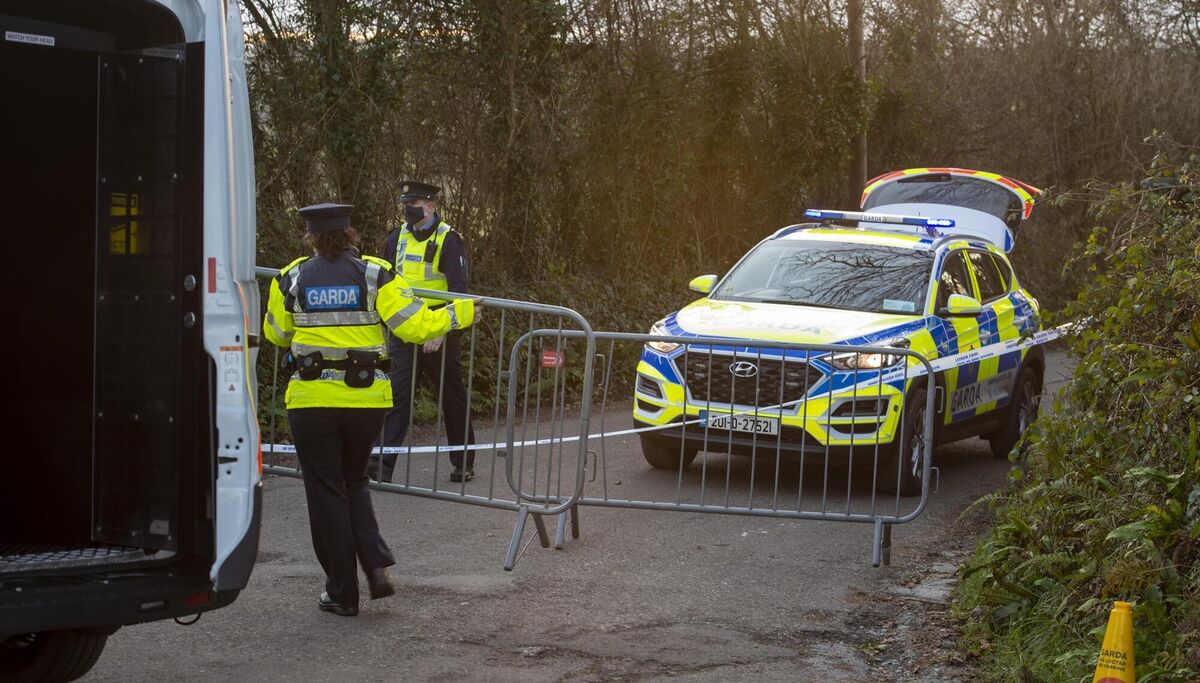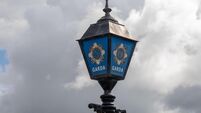Garda search continues after more skeletal remains found in East Cork

Gardaí on duty near where workmen found human remains on the old Midleton to Youghal railway line while clearing it for a greenway at Shanty Path, Midleton, East Cork. Picture: Dan Linehan
Gardaí are still searching an area of disused railway line in East Cork after more human skeletal remains were found on Thursday.
While weather conditions posed additional challenges to the technical examination of the scene in the Roxborough area, about 3km east of Midleton, gardaí said the site will remain sealed off while the examination continues.
The initial grim discovery of a human skull was made on Tuesday afternoon by men clearing undergrowth on the route of the proposed Midleton to Youghal greenway, along the old Cork to Youghal rail line.
Gardaí sealed off the scene before requesting the services of the Office of the State Pathologist.
The skull was examined in situ by Dr Margot Bolster, the assistant State pathologist, and by a forensic anthropologist.
Gardaí have not officially confirmed the discovery of additional remains but it is understood that a number of human bones were found in the same search area on Thursday.
In a statement, gardaí would only say that the area remains sealed off as they continue their examination.
“The State pathologist has attended but the examination of the scene has not concluded at this time. The outcome of these examinations will determine the course of the investigation,” they said.
When the search concludes, the remains will be removed to Cork University Hospital (CUH) for a more detailed examination and analysis.
It is understood that gardaí are working on an initial belief that the remains are those of an adult male and may be historic — which means that they could have been at this location for anything between 50 and 100 years. But they are keeping an open mind. They are liaising with local historians to establish whether the remains can be linked to possible executions and burials dating from the War of Independence era.

They are also compiling a list of missing persons in the event that further analysis of the bones sheds new light on the case.
Among the more high-profile missing person cases from the area in recent years is that of Tina Satchwell, who was last seen at her home in Youghal on March 20, 2017.
Her husband, Richard, has repeatedly said he believes she is alive. Despite an extensive Garda investigation, and several media appeals, she has not been seen since.
Forensic anthropology and specialist bone analysis techniques could play a key role in the identification of the remains.
Such remains can build a picture of the deceased by providing a biological profile — ancestry, age at death, biological sex, and the living height of the person — which can all help investigators focus their enquiries.
Given that fingerprints can’t be used for identification purposes, dental records, if teeth are present, and DNA material will be vital.
Investigators will first have to determine whether the remains are historic, or forensically significant — any remains that can be dated to within 70 years would be considered forensically significant given that relatives could still be alive. And if foul play is suspected, there is a chance that a perpetrator could still be alive too.
Investigators will first consider the context in which the bones were found — on the surface or buried, and if buried, how deep and in what way.
They will also look for clothing or jewellery, which could help date material, and for evidence of surgical or dental interventions, in the hope that a comparison can be made with dental records or medical scans of missing persons, or they may consider radiocarbon dating techniques.
The spike in atom bomb testing in the 1950s led to increased levels of specific radioactive materials in the environment — the so-called bomb curve.
Certain tests on bones can detect whether there are heightened levels of these isotopes in the bones, and determine whether someone was alive after this period, again helping to focus Garda lines of inquiry.

Teeth can also help pinpoint the geographic or regional origin of the deceased.
Bones can also be subjected to even more specialist testing at the Chrono Centre, part of Queen's University in Belfast, where high precision radiocarbon dating and isotope analysis can pinpoint a time of death to within a few years.
Forensic anthropologists played a key role in the identification of human skeletal remains in Rathmines last year. Given the complexities of the tests involved, it took three months before the remains were formally identified as those of a man who had been reported missing up to a decade earlier.
The Midleton to Youghal railway line was first developed in 1859. It was closed to regular passenger traffic in February 1963, and to all goods traffic by August 1982.
Cork County Council is overseeing its €19.8m redevelopment into a 23km greenway, which is expected to open in late 2022.
“The site is currently under the control of An Garda Siochana. Cork County Council has no further comment,” the council said in a statement.





